DIY Handmade Rugs: A Cozy Touch to Your Decor
Have you ever walked into a room and felt an instant wave of warmth and comfort? That’s the magic of a beautifully crafted rug! DIY handmade rugs not only add a cozy touch to your decor, but they also bring a unique personality to your space. Imagine stepping onto a soft, inviting rug that you created with your own hands—it's like having a piece of art underfoot! In this article, we will explore the art of crafting your own rugs, covering everything from materials to techniques, and even design ideas that will ignite your creativity. So, roll up your sleeves and let’s dive into this colorful world of rug-making!
The first step in creating your own handmade rug is selecting the right materials. This decision is crucial, as it affects both the durability and aesthetics of your rug. You might find yourself standing in a craft store, overwhelmed by the array of options available. Should you go for natural fibers like wool and cotton, or opt for synthetic materials like polyester? Here’s a quick breakdown:
| Material | Pros | Cons |
|---|---|---|
| Wool | Durable, warm, natural | Can be expensive, may shed |
| Cotton | Soft, easy to clean, affordable | Less durable, can fade |
| Polyester | Colorfast, affordable, stain-resistant | Less breathable, can feel synthetic |
By understanding the pros and cons of each material, you can make informed decisions that suit your style and budget. Remember, the right material not only enhances the look of your rug but also its lifespan!
Now that you have your materials, it's time to get familiar with some basic rug-making techniques. Whether you’re a novice or have some experience, mastering techniques like weaving, tufting, and braiding will help you create a stunning piece that reflects your unique style. Each method offers its own textures and styles, making it possible to craft a rug that fits your vision perfectly.
Weaving is a traditional technique that can produce intricate designs, and it’s a fantastic way to express your creativity. There are various weaving methods, including loom weaving and hand-weaving. Each method has its own charm and can help you master this timeless craft.
If you’re looking for a structured approach, using a loom can streamline the rug-making process. With the right setup, a loom can provide consistency and help you achieve beautiful results. There are different types of looms available, from simple frame looms to more complex floor looms. Understanding how to set them up can be a game-changer for your projects!
On the other hand, if you prefer greater creativity and personalization, hand-weaving might be the way to go. This technique allows you to experiment with colors and patterns freely. You can achieve stunning results with just a few tools and a bit of patience. Think of it as painting with yarn—each thread adds a stroke to your masterpiece!
Tufting is another popular method for creating plush, textured rugs that feel incredibly cozy underfoot. This technique involves pushing yarn through a backing material to create a thick pile. It’s a fun and rewarding process, and with the right tools, you can easily tuft your own rug at home. Imagine curling up in your living room, surrounded by the warmth of a rug that you made yourself—it’s a feeling like no other!
Once you've grasped the techniques, it's time to get inspired! Design ideas can come from anywhere—nature, art, or even your personal experiences. Think about what colors and patterns resonate with you. For instance, do you love the calming blues of the ocean or the vibrant colors of a sunset? Incorporating these elements into your rug design can create a beautiful focal point in your space.
Choosing the right color scheme is essential for achieving harmony in your decor. Different colors can evoke various emotions, so consider how you want your space to feel. For example, soft pastels can create a serene atmosphere, while bold colors can energize a room. Explore different color palettes and their psychological effects to enhance your rug’s impact on your space.
Incorporating diverse patterns and textures can elevate your rug’s design to a whole new level. Think of combining geometric shapes with soft, organic lines, or mixing a plush surface with a flat-weave design. The possibilities are endless! By playing with patterns and textures, you can create a visually appealing result that adds depth to your decor.
After all your hard work, the last thing you want is for your handmade rug to lose its charm. Proper maintenance ensures the longevity of your creation. Regular cleaning is vital for maintaining your rug’s appearance, so discover effective cleaning methods tailored to different materials. For instance, wool rugs might require gentle washing, while synthetic materials can often handle a bit more scrubbing.
To keep your rug looking fresh and beautiful, establish a cleaning routine. A simple vacuuming session can work wonders, but be sure to check the manufacturer's guidelines for any specific care instructions. You can also spot clean stains with a mixture of mild detergent and water, but always test a small area first!
When it’s time to store your handmade rugs, do it right to prevent damage. Avoid folding them, as this can create creases; instead, roll them up gently. Protect them during off-seasons or when not in use by keeping them in a cool, dry place. With the right care, your handmade rugs can last for years, continuing to bring joy to your home.
- What materials are best for beginners? Cotton and synthetic fibers are often easier to work with and more forgiving for beginners.
- How long does it take to make a rug? The time varies based on the size and complexity of the design, but a small rug can take a few hours to a few days.
- Can I wash my handmade rug? Yes, but it's essential to follow the care instructions based on the materials used.
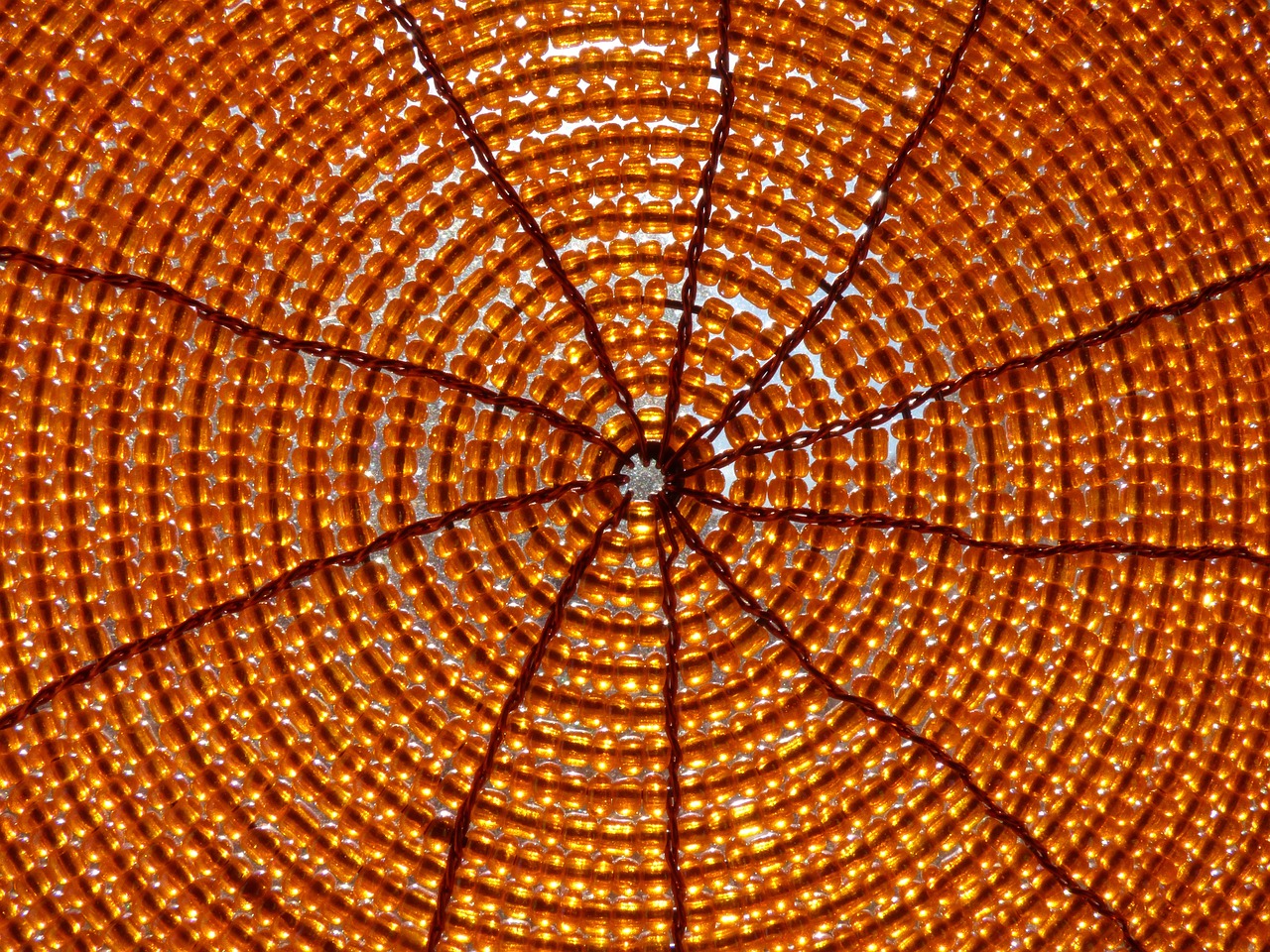
Choosing the Right Materials
When it comes to crafting your own handmade rug, is absolutely crucial. Not only does the material affect the durability of your rug, but it also plays a significant role in its aesthetic appeal. Imagine stepping onto a soft, plush rug made from high-quality fibers versus a coarse, synthetic option that feels like sandpaper underfoot. The difference is night and day! So, let’s dive into the various materials you can choose from and their respective pros and cons.
First up, we have natural fibers. These are often preferred for their eco-friendliness and luxurious feel. Common natural fibers include:
- Wool: Known for its warmth and durability, wool is a popular choice for rugs. It’s naturally stain-resistant and can handle heavy foot traffic.
- Cotton: Soft and easy to clean, cotton rugs are great for casual spaces. However, they may not be as durable as wool.
- Sisal: This is a tough, natural fiber that adds a rustic touch to your decor. It’s perfect for high-traffic areas but can be rough on bare feet.
On the flip side, we have synthetic fibers, which come with their own set of advantages. These materials are often more affordable and can mimic the look of natural fibers. Some popular synthetic options include:
- Polypropylene: This is a durable, stain-resistant option that is easy to clean. It’s great for outdoor rugs but may lack the warmth of natural fibers.
- Nylon: Known for its resilience, nylon is often used in high-traffic areas. It’s colorfast and resistant to fading, making it a practical choice.
Now, let’s not forget about the blends. Some rugs combine natural and synthetic fibers to offer the best of both worlds. For example, a wool-polyester blend can provide the softness of wool while enhancing durability and ease of maintenance. When considering materials, think about how you want your rug to feel and look in your space. Do you want a cozy, inviting atmosphere, or are you aiming for something more contemporary and sleek?
It’s also important to consider the environmental impact of your material choices. Natural fibers are often biodegradable and produced with less environmental harm, while synthetic fibers can take hundreds of years to decompose. If sustainability is a priority for you, opting for natural materials or recycled synthetics might be the way to go.
Lastly, don’t forget to think about your budget. While it’s tempting to splurge on high-end materials, there are plenty of affordable options that don’t compromise on style or quality. You can create a stunning rug without breaking the bank by mixing and matching materials or choosing smaller sizes. Remember, the key is to find a balance between cost, quality, and your personal style.
In summary, the materials you choose for your handmade rug can significantly influence its look, feel, and longevity. Whether you go for the luxurious feel of natural fibers or the practicality of synthetics, understanding the characteristics of each option will help you create a rug that not only fits your decor but also stands the test of time.

Basic Rug-Making Techniques
When it comes to creating your own handmade rugs, understanding the basic techniques is essential. These techniques not only provide a solid foundation but also allow your creativity to flourish. Whether you're a complete beginner or someone looking to refine your skills, familiarizing yourself with the various methods of rug-making can be an exciting journey. The most popular techniques include weaving, tufting, and braiding. Each method has its own unique charm and can yield stunning results that will enhance any space in your home.
Let’s dive deeper into these techniques. First up is weaving, a traditional craft that has stood the test of time. Weaving is a process that interlaces threads or yarns to create a fabric, and when done correctly, it can produce intricate designs that are visually captivating. You can choose between using a loom, which helps maintain structure and consistency, or hand-weaving, which offers a more personal touch. Both methods have their advantages, and your choice may depend on the complexity of the design you envision.
In the world of weaving, there are two primary approaches: loom weaving and hand-weaving. Each of these methods has its own set of tools and techniques that can affect the overall look and feel of your rug. For instance, using a loom can streamline the process, allowing you to focus on the creative aspects without worrying too much about maintaining tension in your yarns. On the other hand, hand-weaving gives you the freedom to experiment with various patterns and textures, making it a perfect choice for those who want to express their individuality.
When using a loom, you'll first need to select the right type for your project. There are several options available, including frame looms, table looms, and floor looms. Each type has its own benefits, and your choice will depend on the scale of your rug and your level of experience. Setting up a loom requires some initial preparation, such as warping the loom, which involves threading the yarns through the loom’s structure. Once you have everything in place, you can begin weaving your design, watching as your rug takes shape with each pass of the shuttle.
If you decide to go the hand-weaving route, you’ll find that this method allows for a greater degree of creativity. You can use a variety of materials, from cotton to wool, and experiment with different techniques such as over-under weaving or twining. Hand-weaving also opens up a world of possibilities when it comes to color and texture. Imagine creating a rug that tells a story through its patterns or one that captures the essence of a beautiful sunset through its color palette. The key to successful hand-weaving is to practice consistently and to not be afraid to make mistakes – they can often lead to the most unique designs!
Another popular method is tufting, known for producing plush and textured rugs that are incredibly inviting. This technique involves using a tufting gun or a hand-tufting method to push yarn through a backing material, creating loops that form the rug's pile. The result is a soft, cozy surface that feels great underfoot. To successfully tuft your rug, you'll need to gather some essential tools, including a tufting gun (if you're using the machine method), a backing fabric, and of course, your chosen yarns. The process can be a bit labor-intensive but is well worth the effort when you see the final product.
In conclusion, mastering these basic rug-making techniques will empower you to create beautiful handmade rugs that reflect your personal style. Whether you choose to weave or tuft, each method offers its own unique appeal and allows you to express your creativity in your home decor.
Q: What materials do I need to start making a rug?
A: To start making a rug, you'll need yarn or fabric, a loom or tufting gun, scissors, and a backing material depending on the technique you choose.
Q: Can I use recycled materials for my rug?
A: Absolutely! Using recycled materials like old fabric or yarn can add a unique touch to your rug and is an eco-friendly choice.
Q: How long does it take to make a handmade rug?
A: The time it takes to create a handmade rug varies based on the technique and complexity of the design. It can range from a few hours to several weeks.
Q: How do I care for my handmade rug?
A: Regular cleaning is essential. Vacuum your rug frequently, and for deeper cleaning, refer to the specific care instructions based on the materials used.

Weaving Methods
Weaving is not just a craft; it's a timeless art form that has been passed down through generations, allowing creators to express their individuality and style. When it comes to making handmade rugs, mastering various weaving methods can open up a world of possibilities for your designs. Whether you choose to use a loom or prefer the freedom of hand-weaving, each technique offers unique textures and patterns that can transform a simple piece of fabric into a stunning focal point in your home.
One of the most popular weaving methods is loom weaving. This technique utilizes a frame that holds the threads in place, providing a structured approach to rug-making. Loom weaving can produce intricate designs that are both durable and visually appealing. There are different types of looms available, from simple frame looms to more complex floor looms, each suited for various skill levels and project sizes. For beginners, a frame loom is a fantastic starting point, as it allows for easy manipulation of threads and straightforward design execution.
On the other hand, hand-weaving offers a more organic approach, inviting creativity and spontaneity into the process. Without the constraints of a loom, you can experiment with different techniques, patterns, and colors. Hand-weaving allows you to create unique textures that can’t be replicated by machines. For instance, you can use a technique called soumak, which involves wrapping the weft around the warp threads, creating a raised texture that adds depth to your rug. This method is perfect for those who want to incorporate their personal touch into their creations.
To help you decide which method might be best for your project, here’s a quick comparison:
| Weaving Method | Pros | Cons |
|---|---|---|
| Loom Weaving |
|
|
| Hand-Weaving |
|
|
Whichever method you choose, remember that practice makes perfect. Start with simple designs and gradually challenge yourself with more complex patterns. The beauty of weaving lies in its ability to evolve with your skills, allowing you to create rugs that not only serve a functional purpose but also tell a story about your journey as a creator. So, grab your materials, let your imagination run wild, and start weaving your own masterpiece!
If you have more questions about weaving methods or rug-making in general, here are some common inquiries:
- What materials do I need to start weaving? Basic materials include yarn or fabric strips, a loom (if using loom weaving), and scissors. For hand-weaving, you might only need a sturdy surface to work on.
- Can I use recycled materials for my rugs? Absolutely! Using recycled materials not only adds character to your rug but also makes it an eco-friendly project.
- How long does it take to make a handmade rug? The time varies based on the size and complexity of the rug, but with dedication, you can complete a simple rug in a few days to a week.
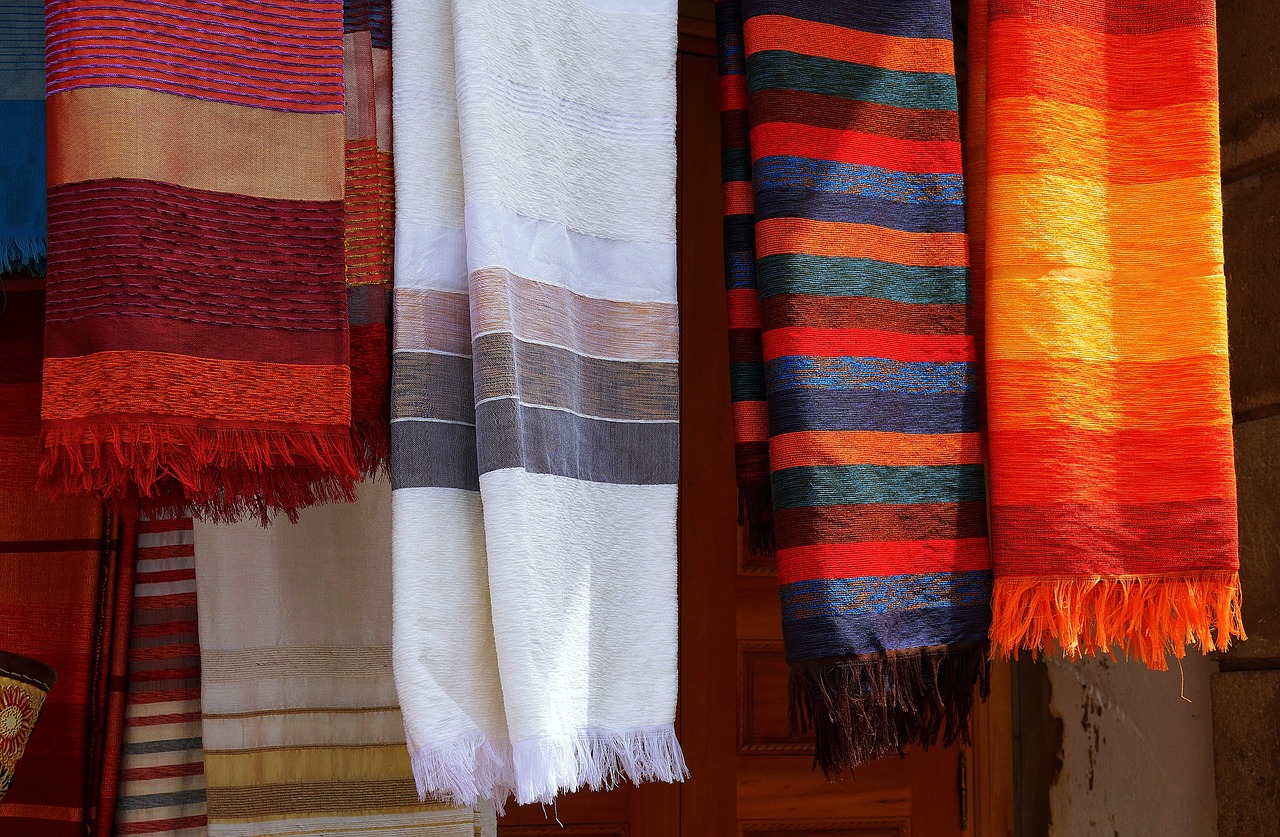
Using a Loom
Using a loom can be a game-changer in your rug-making journey. It not only provides a structured framework but also ensures consistency in your designs. Imagine having a sturdy companion that holds your materials in place, allowing you to focus solely on your creativity. There are several types of looms available, each catering to different styles and preferences. Before diving into the weaving process, it's essential to understand the various loom types and their functionalities.
For instance, floor looms are fantastic for larger projects, giving you the ability to create intricate patterns with ease. On the other hand, table looms are more compact and portable, making them perfect for smaller spaces or for those who enjoy crafting on the go. If you're just starting, a rigid heddle loom might be your best bet, as it strikes a balance between simplicity and versatility.
Setting up your loom can seem daunting at first, but with a little patience, you'll find it rewarding. Here’s a simplified overview of the setup process:
- Gather Your Materials: You’ll need yarn, a loom, and a shuttle. Choose your yarn based on the type of rug you wish to create.
- Warping the Loom: This involves threading the yarn through the loom's heddles. It’s vital for determining the rug's width and design.
- Weaving: Once the loom is warped, you can start weaving by passing the shuttle through the warp threads, creating the desired pattern.
As you weave, don’t hesitate to experiment with various yarn types and colors. The beauty of using a loom lies in the endless possibilities it offers. You can create everything from simple geometric designs to complex motifs that tell a story. Remember, the key to mastering loom weaving is practice. The more you weave, the more comfortable you'll become with the process, and soon enough, you’ll be crafting stunning rugs that are not only functional but also a true reflection of your artistic flair.
In addition to the creative aspect, using a loom can also be a therapeutic experience. The rhythmic motion of weaving can be meditative, allowing you to unwind and lose yourself in the process. So, grab your loom, unleash your imagination, and let the fibers weave together to create something beautiful!
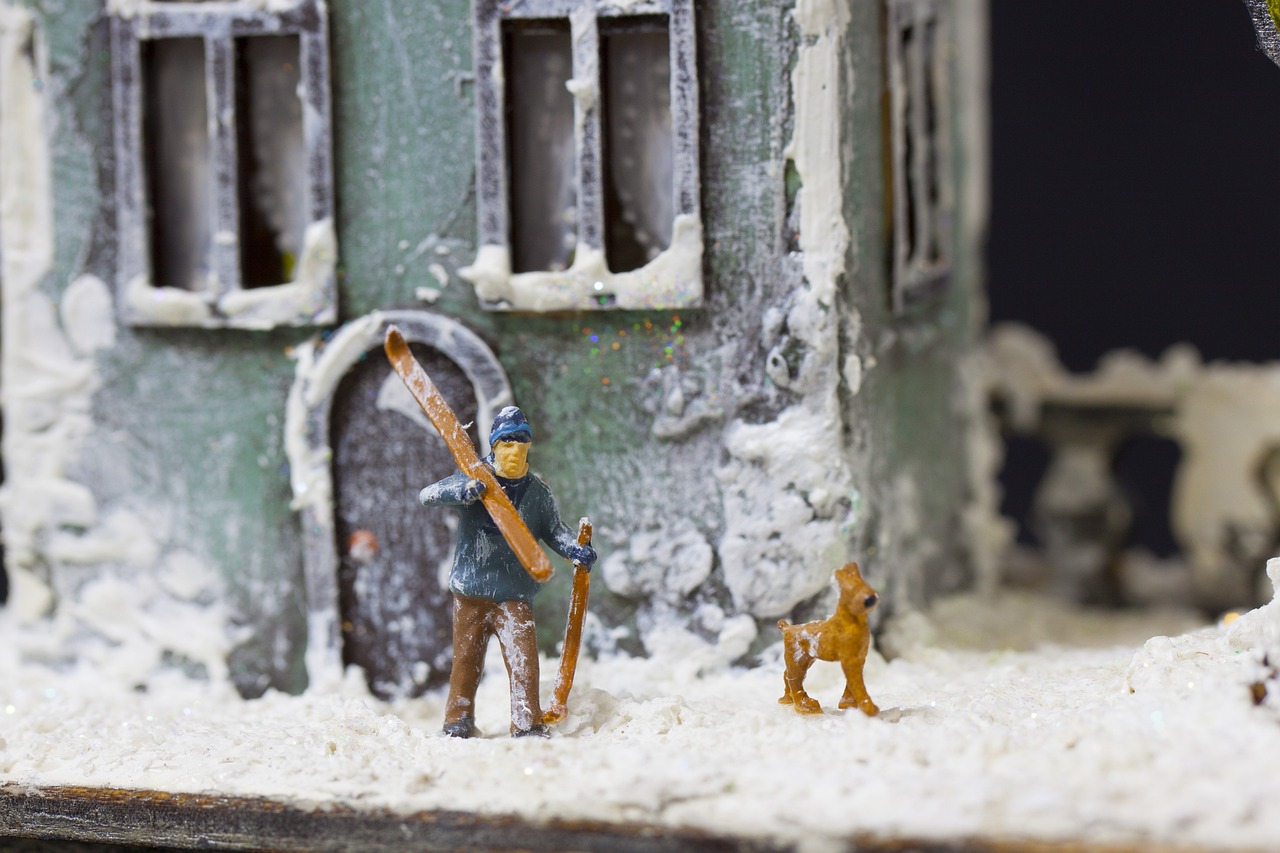
Hand-Weaving Techniques
Hand-weaving is a captivating way to create unique rugs that showcase your personal touch. Unlike machine-made rugs, hand-woven creations are imbued with character and artistry, making them a true reflection of your style. The beauty of hand-weaving lies in its flexibility; you can experiment with different yarns, colors, and patterns to produce something truly one-of-a-kind. But where do you start? Let’s dive into some essential techniques and tips that will elevate your hand-weaving game.
One of the first things to consider is the type of yarn you want to use. Natural fibers like wool, cotton, and jute are popular choices due to their durability and texture. Wool, for example, is not only warm and cozy but also has natural elasticity, making it perfect for rugs that will see a lot of foot traffic. On the other hand, cotton offers a softer feel and is easier to dye, allowing for vibrant colors and patterns. If you're feeling adventurous, you might even try blending different fibers to create a unique texture that can transform your rug into a work of art.
Next, let’s talk about the actual technique of hand-weaving. You can choose between a few methods, such as the simple over-under technique or more complex patterns like twill or houndstooth. The key is to maintain a consistent tension in your weaving, which ensures that your rug will be both sturdy and aesthetically pleasing. Here’s a quick breakdown of the basic hand-weaving process:
- Setup: Begin by preparing your warp threads. These are the vertical threads that will form the backbone of your rug.
- Weaving: Use a shuttle to pass the weft threads (horizontal threads) over and under the warp threads. This is where you can introduce color changes or patterns.
- Finishing: Once you’ve reached the desired size, secure the edges to prevent unraveling. This can be done by tying knots or using a sewing technique.
One of the most rewarding aspects of hand-weaving is the ability to create intricate patterns. You can experiment with different techniques to achieve various effects. For example, using a tapestry technique allows you to incorporate images or motifs into your rug. This method involves carefully selecting colors and weaving them in a way that creates a picture or design, offering a stunning visual impact.
Another exciting technique is the use of texture. By varying the thickness of your yarn or incorporating different weaving techniques, you can create a multi-dimensional effect that adds depth to your rug. For instance, using a thicker yarn for certain sections can create a plush feel, while thinner yarns can provide a sleek finish. This contrast can make your rug not only a visual delight but also a tactile experience.
As you embark on your hand-weaving journey, remember that practice makes perfect. Don’t be afraid to make mistakes; each one is a learning opportunity that will enhance your skills. Take your time, enjoy the process, and before you know it, you’ll have a stunning hand-woven rug that’s not just a piece of decor but a testament to your creativity.
Q: What materials do I need to start hand-weaving?
A: To begin, you'll need a loom, yarn (preferably natural fibers), scissors, a shuttle, and a tapestry needle for finishing touches.
Q: How long does it take to make a hand-woven rug?
A: The time it takes can vary greatly depending on the size and complexity of the design. A simple rug may take a few days, while more intricate patterns could take weeks.
Q: Can I wash my hand-woven rug?
A: Yes, but it’s essential to follow specific care instructions based on the materials used. Generally, hand-woven rugs should be spot cleaned or gently hand washed to maintain their integrity.
Q: What if I make a mistake while weaving?
A: Mistakes are part of the learning process. You can often fix them by carefully unweaving the affected section or incorporating the mistake into your design as a unique element.

Tufting Techniques
Tufting is an incredibly popular technique for creating plush, textured rugs that can add a cozy and inviting touch to any room. If you've ever walked on a soft, fluffy rug and thought, "I want to create something like this," then tufting might just be your new favorite hobby! This method involves inserting yarn or fabric into a backing material, creating loops or cut piles that form the rug's surface. What’s great about tufting is that it allows for an extensive range of designs and textures, making it perfect for those who want to express their creativity.
To get started with tufting, you’ll need a few essential tools. A tufting gun is the most common tool used, as it allows for quick and efficient tufting. If you’re looking for a more hands-on approach, you can also use a tufting frame and a hand tufting needle. The choice between these tools often comes down to personal preference and the complexity of the design you wish to create. Here’s a quick breakdown of the tools:
| Tool | Description |
|---|---|
| Tufting Gun | A powered tool that inserts yarn into the backing material quickly and efficiently. |
| Hand Tufting Needle | A manual tool that allows for more control and creativity in the tufting process. |
| Tufting Frame | A supportive frame that holds the backing material taut while you work. |
Once you have your tools ready, the next step is to choose your backing material and yarn. The backing can be made from various materials, such as burlap or canvas, and it's essential to select one that can withstand the tufting process. For yarn, consider using wool or acrylic, as these fibers provide durability and a variety of textures. The color and thickness of the yarn will also play a significant role in the final look of your rug, so don’t shy away from experimenting!
Now, let’s dive into the tufting process itself. Start by sketching your design on paper or directly on the backing material. This will serve as your guide throughout the tufting process. Next, secure the backing material to your tufting frame, ensuring it’s taut. If you’re using a tufting gun, load your yarn and start tufting according to your design. For hand tufting, thread your needle with yarn and begin inserting it into the backing, following your sketch. The beauty of tufting lies in its versatility; you can create intricate patterns or simple designs based on your preference.
After you’ve completed the tufting, the next step involves securing the yarn to prevent it from unraveling. This is typically done by applying a layer of latex or adhesive to the back of the rug. Once it’s dry, you can trim any excess yarn and finish the edges to give your rug a polished look. Voila! You now have a stunning handmade tufted rug that not only enhances your space but also showcases your creativity.
In summary, tufting is a fantastic way to create custom rugs that reflect your personal style. Whether you’re a seasoned crafter or just starting, the process can be incredibly rewarding. So why not gather your materials and start tufting? You might just find yourself lost in a world of creativity!
- What materials do I need to start tufting? You'll need a tufting gun or hand tufting needle, backing material (like burlap), yarn, and a tufting frame.
- Can I tuft with any type of yarn? While you can use various yarn types, wool and acrylic are recommended for their durability and texture.
- How do I maintain my tufted rug? Regular vacuuming and occasional spot cleaning will help maintain its appearance. Avoid harsh chemicals.
- Is tufting difficult for beginners? Tufting can be learned with practice. Start with simple designs and gradually try more complex patterns.
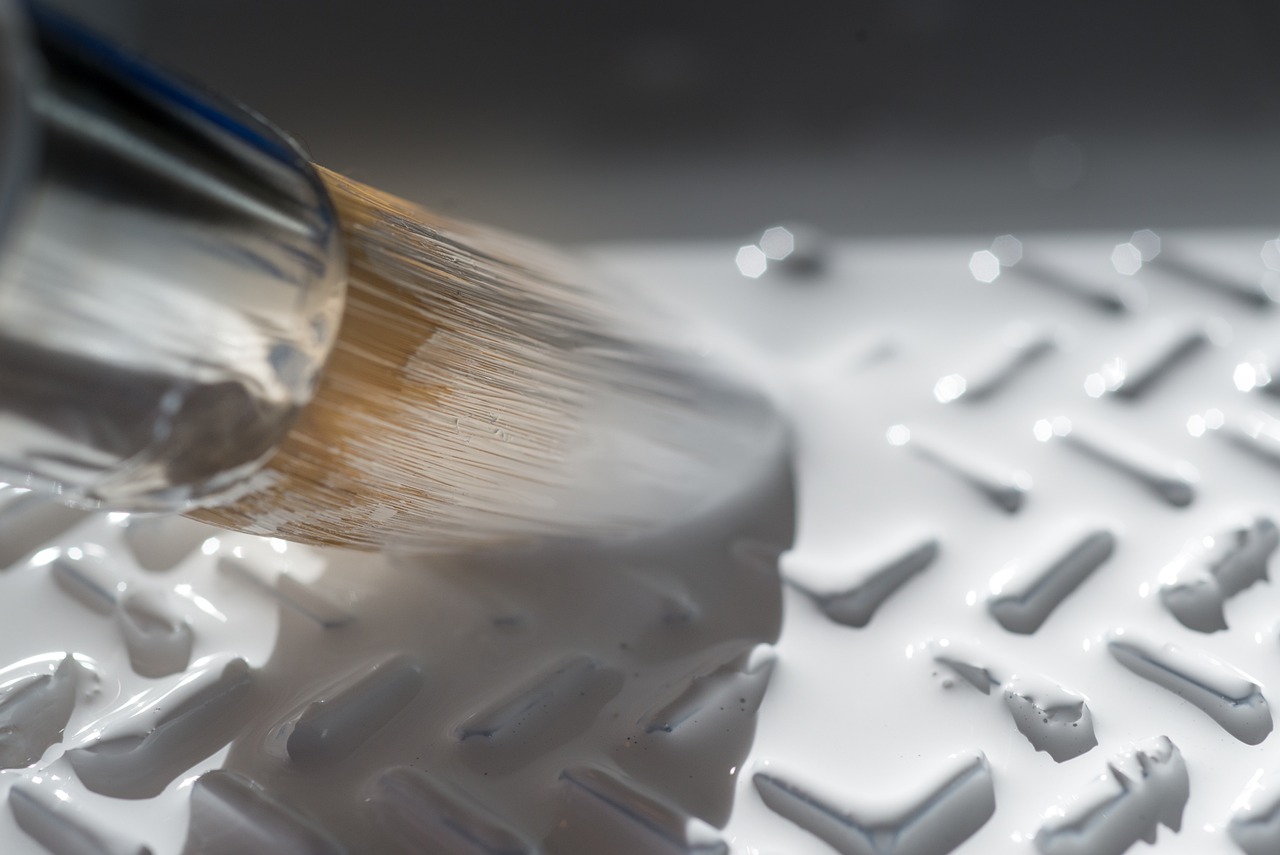
Design Ideas for Your Rug
When it comes to designing your own handmade rug, the possibilities are as endless as your imagination! Inspiration can strike from anywhere—be it the vibrant hues of a sunset, the intricate patterns found in nature, or even a cherished piece of art that speaks to your soul. The key is to create a rug that not only serves a functional purpose but also enhances your living space and reflects your unique personality. Think of your rug as a canvas; it can set the tone for an entire room or add a pop of color to a neutral palette.
One of the first things to consider is your color scheme. Choosing the right colors can transform your space and evoke certain feelings. For example, warm tones like reds and oranges can create a cozy and inviting atmosphere, while cool tones such as blues and greens can instill a sense of calm and tranquility. Here are a few popular color palettes to consider:
| Color Palette | Emotional Effect |
|---|---|
| Earth Tones | Warmth and Comfort |
| Monochromatic Blues | Calm and Serenity |
| Vibrant Jewel Tones | Richness and Elegance |
| Pastel Shades | Softness and Freshness |
Next, let’s talk about patterns and textures. Incorporating diverse designs can elevate your rug’s aesthetic and make it a focal point in any room. Popular patterns include geometric shapes, floral designs, and abstract art. Mixing textures is another fantastic way to add depth and interest. For instance, you might combine a plush tufted rug with a flat-woven one to create a stunning visual contrast. Imagine stepping onto a soft, fluffy surface while surrounded by the crisp lines of a geometric pattern—it's a feast for the senses!
Additionally, consider the theme of your room. If your decor is rustic, think about using natural fibers like jute or wool in earthy tones. For a modern space, sleek and minimalist designs in bold colors can create a striking effect. Your rug should harmonize with the overall theme of your home, acting as both a functional piece and a work of art.
Finally, don’t forget about personal touches! Incorporating elements that tell your story can make your handmade rug truly special. Perhaps you have a favorite quote you’d like to weave into the design or symbols that represent significant moments in your life. Your rug can be a reflection of your journey, making it not just a decorative item but a cherished keepsake.
- What materials are best for handmade rugs? Natural fibers like wool and cotton are popular for their durability and aesthetic appeal, while synthetic options like nylon are great for high-traffic areas.
- How do I choose the right size for my rug? Measure your space and consider the arrangement of your furniture. A general rule is to leave at least 18 inches of bare floor around the edges.
- Can I wash my handmade rug? Yes, but cleaning methods depend on the material. Always check the care instructions and consider professional cleaning for delicate fibers.
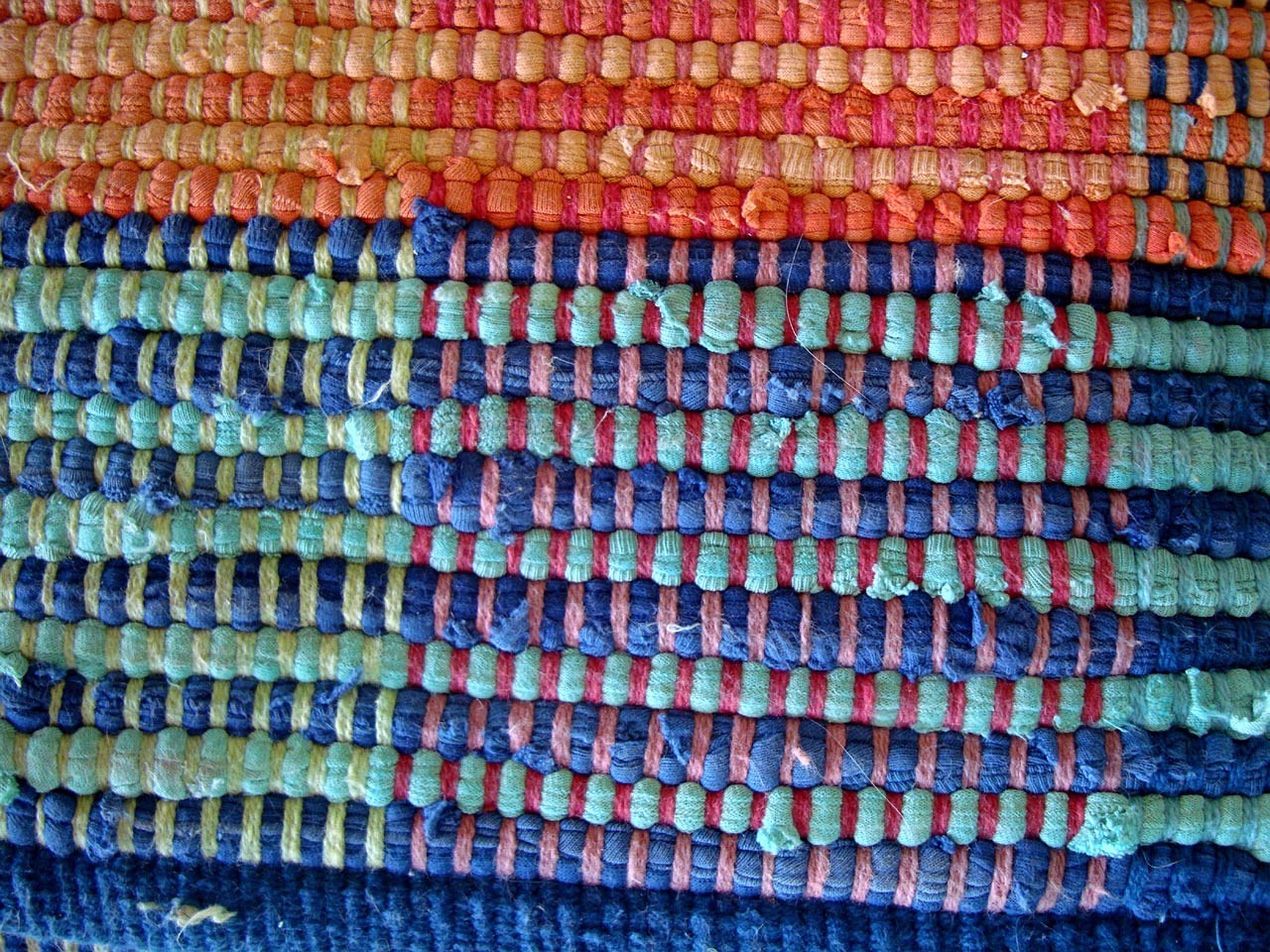
Color Schemes
Choosing the right color scheme for your handmade rug is like selecting the perfect outfit for a special occasion—it sets the tone and reflects your personality. The colors you choose can transform a space, evoking emotions and creating an ambiance that resonates with everyone who enters your home. So, how do you go about picking the right palette? Let’s dive into the world of colors and their psychological impacts.
First, consider the overall theme of your room. Are you going for a cozy, warm vibe or a more modern, sleek look? For instance, earthy tones like browns, greens, and soft yellows can create a serene atmosphere, reminiscent of nature. On the other hand, vibrant colors like reds, blues, and yellows can energize a space, making it feel lively and dynamic. The key is to ensure that the colors of your rug harmonize with the existing decor.
To help you visualize the impact of different color schemes, here’s a simple table that breaks down some popular combinations:
| Color Scheme | Description | Psychological Effect |
|---|---|---|
| Monochromatic | Variations of one color | Calm and cohesive |
| Complementary | Opposite colors on the color wheel | Vibrant and energetic |
| Analogous | Colors next to each other on the wheel | Harmonious and serene |
| Triadic | Three colors evenly spaced on the wheel | Balanced and dynamic |
Next, think about the psychological effects of colors. For example, blue is often associated with tranquility and trust, making it an excellent choice for a bedroom rug. Meanwhile, yellow can stimulate happiness and creativity, perfect for a playroom or home office. When selecting your colors, ask yourself what mood you want to create in the space.
Furthermore, don't shy away from experimenting with patterns. A rug with a bold pattern can serve as a statement piece, drawing the eye and adding a focal point to the room. However, ensure that the colors in the pattern complement the rest of your decor. Mixing textures can also enhance the overall visual appeal, creating depth and interest in your design.
Lastly, it’s essential to test your color choices in the actual space. Colors can look different depending on lighting conditions. So, grab some fabric swatches or paint samples and see how they interact with your walls, furniture, and other decor elements. This step is crucial to ensure that your handmade rug not only looks great but also feels right in your home.
- What colors should I avoid when choosing a rug? It's best to avoid overly dark colors in small spaces as they can make the area feel cramped. Additionally, very bright colors might overwhelm the room.
- Can I mix different color schemes in one room? Absolutely! Just ensure that there's a common element, such as a color that ties them together, to maintain harmony.
- How do I maintain the vibrancy of my rug's colors? Regular cleaning and avoiding direct sunlight can help keep your rug looking fresh and vibrant.
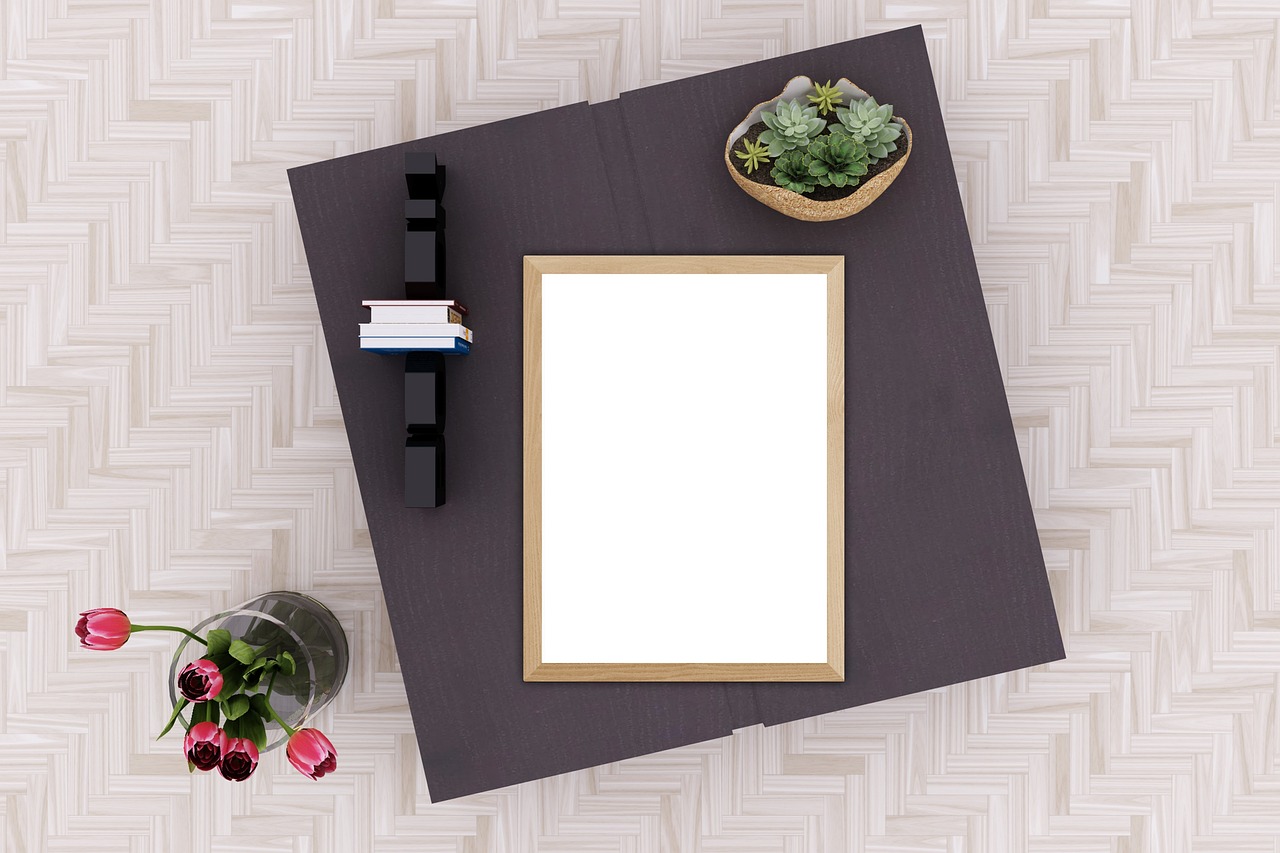
Patterns and Textures
When it comes to creating a stunning handmade rug, play a pivotal role in elevating the overall design. Imagine walking into a room and being immediately drawn to a vibrant, intricately patterned rug that adds life to the space. Patterns can tell a story, evoke emotions, and even serve as conversation starters. Whether you prefer bold geometric shapes or delicate floral designs, the right pattern can transform your rug into a true masterpiece.
Textures, on the other hand, add depth and dimension to your rug. Think of textures as the spice in your favorite dish; they enhance the overall flavor and experience. Combining different textures can create a rich tapestry that invites touch and admiration. For instance, pairing a soft, plush tufted area with a flat-woven accent can create a delightful contrast that draws the eye and encourages exploration.
Here are some popular patterns and textures that you might consider for your next rug project:
- Geometric Patterns: Perfect for modern interiors, these designs often feature clean lines and shapes that can create a striking visual impact.
- Floral and Nature-Inspired Patterns: These designs bring a touch of the outdoors inside, adding warmth and a sense of tranquility to your space.
- Abstract Designs: If you’re feeling adventurous, abstract patterns can provide a sense of movement and creativity that can energize a room.
- Textured Weaves: Incorporating different weaving techniques can add a tactile element to your rug, making it not just a visual delight but also a sensory experience.
To further enhance your rug's appeal, consider mixing and matching different textures. For example, you might combine a shaggy, high-pile rug with a flat-woven runner to create an inviting layered look. This not only adds visual interest but also invites people to interact with your decor. When done thoughtfully, the combination of various patterns and textures can make your handmade rug a standout feature in your home.
Don't forget to take into account the psychological effects of colors and patterns. For instance, warm colors like reds and oranges can evoke feelings of warmth and comfort, while cool colors like blues and greens can create a serene and calming atmosphere. Understanding how these elements work together can help you design a rug that not only complements your decor but also enhances the mood of your space.
Q: How do I choose the right pattern for my rug?
A: Consider the overall theme of your room. Look for patterns that complement your existing decor while also reflecting your personal style. Don't be afraid to experiment!
Q: Can I mix different textures in my rug design?
A: Absolutely! Mixing textures can create a visually dynamic and inviting space. Just ensure that the textures harmonize with each other to avoid a chaotic look.
Q: What materials work best for creating textured rugs?
A: Natural fibers like wool, cotton, and jute are excellent for creating texture. Synthetic materials can also be used, but they may not provide the same tactile experience as natural fibers.
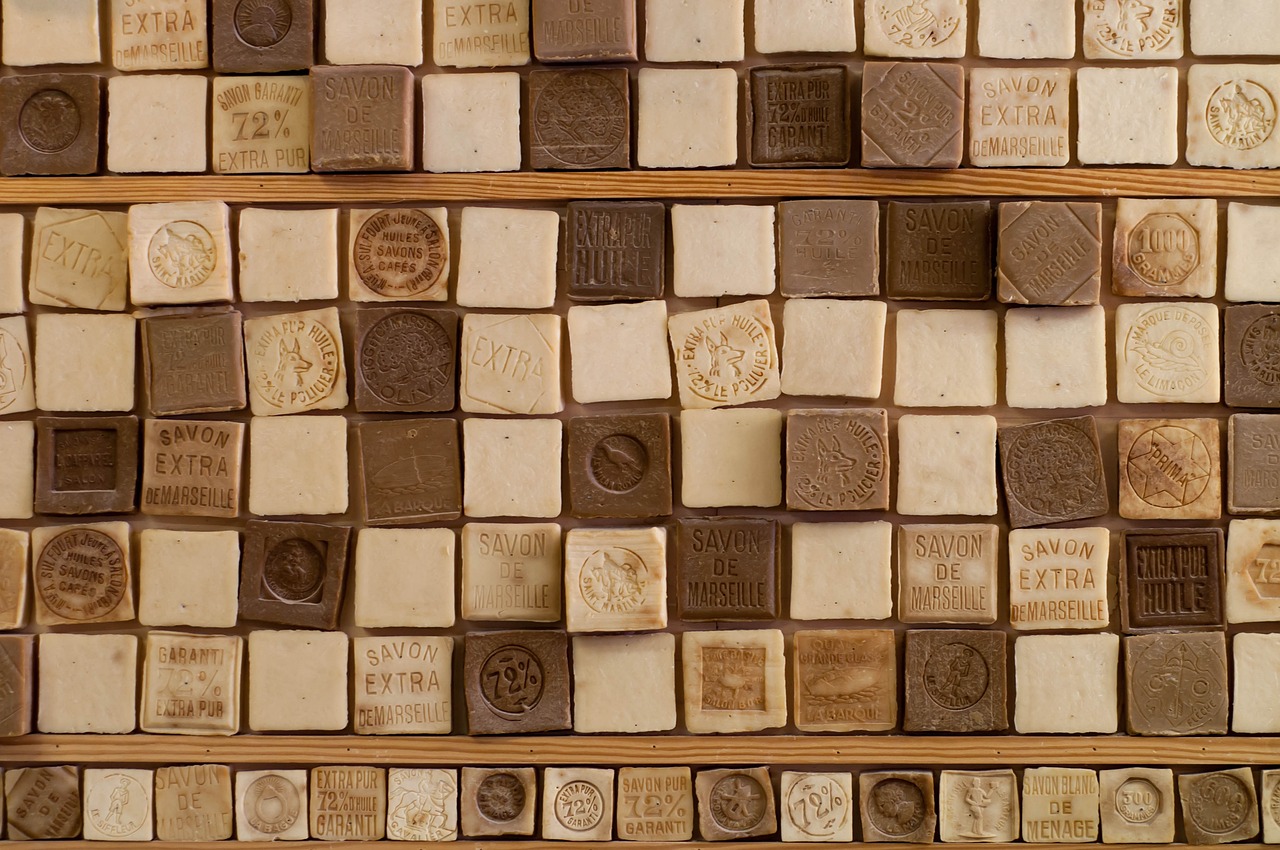
Maintenance and Care
When you’ve put your heart and soul into creating a handmade rug, the last thing you want is for it to lose its charm over time. Proper maintenance is essential to ensure your rug remains a stunning focal point in your home. So, how do you keep that cozy masterpiece looking fresh and fabulous? Let’s dive into some essential tips and tricks!
First off, regular cleaning is your best friend. Depending on the material of your rug, the cleaning methods may vary. For instance, if your rug is made from natural fibers like wool or cotton, you can gently vacuum it at least once a week. This helps remove dirt and dust that can accumulate and dull its appearance. Just remember, always use a vacuum cleaner with a low suction setting to avoid damaging the fibers. On the other hand, synthetic rugs might require a different approach. A simple spot clean with mild soap and water can work wonders for any stains.
Here’s a quick table summarizing cleaning techniques based on the rug material:
| Material | Cleaning Method | Frequency |
|---|---|---|
| Wool | Vacuum gently; professional cleaning every 1-2 years | Weekly |
| Cotton | Machine washable; spot clean as needed | Weekly |
| Silk | Professional cleaning recommended | Annually |
| Synthetic | Spot clean; vacuum regularly | Weekly |
Now, what about those times when you need to store your rug? Proper storage is just as crucial as cleaning. If you’re looking to tuck your handmade rug away during the off-season, be sure to roll it up instead of folding it. Folding can lead to unsightly creases that may never fully come out. Wrap it in a breathable fabric, like cotton, to protect it from dust and moisture. Avoid plastic, as it can trap humidity and lead to mold growth.
Lastly, let’s not forget about the little things that can make a big difference. If your rug is in a high-traffic area, consider using a rug pad underneath. This not only provides extra cushioning but also helps prevent slipping and reduces wear and tear. Plus, it adds an extra layer of protection against dirt and grime.
Q: How often should I clean my handmade rug?
A: It’s best to vacuum your rug at least once a week, but the cleaning frequency may vary based on the material. Natural fiber rugs like wool may need professional cleaning every 1-2 years, while synthetic rugs can be spot cleaned as needed.
Q: Can I machine wash my cotton rug?
A: Yes! Cotton rugs are usually machine washable. Just make sure to follow the care instructions for the best results.
Q: How do I prevent my rug from slipping?
A: Using a rug pad underneath your handmade rug can help prevent slipping and provide additional cushioning.
Q: What’s the best way to store my rug?
A: Roll your rug up instead of folding it, wrap it in breathable fabric, and keep it in a cool, dry place to prevent damage.
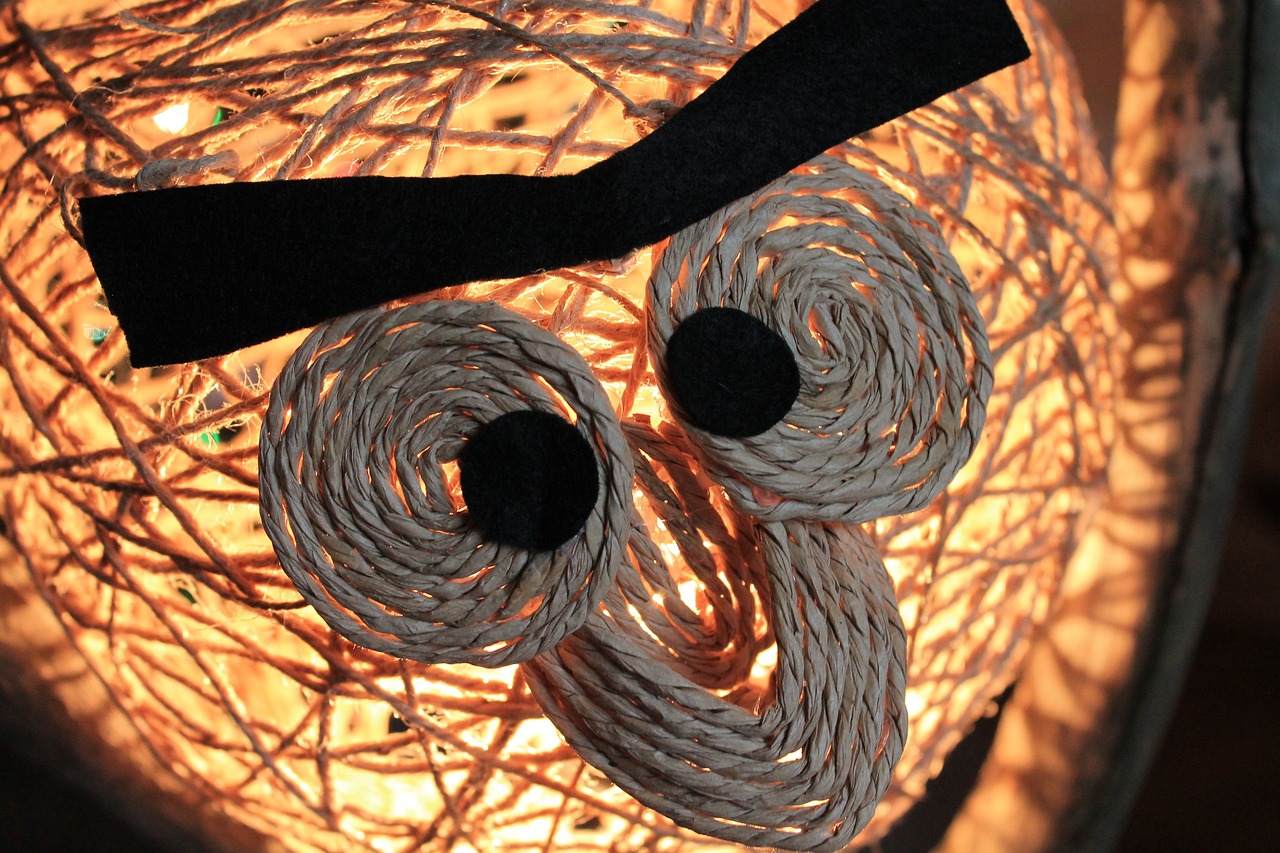
Cleaning Techniques
When it comes to keeping your handmade rugs looking fresh and vibrant, regular cleaning is crucial. Just like a beloved pair of shoes, your rugs need a little TLC to maintain their beauty and longevity. The cleaning techniques you choose will largely depend on the materials used in your rug. For instance, natural fibers like wool and cotton require different care than synthetic materials. Here’s a breakdown of effective cleaning methods tailored to various materials:
| Material | Cleaning Method |
|---|---|
| Wool | Vacuum regularly and spot clean with a mild detergent and water. Avoid soaking. |
| Cotton | Machine wash on a gentle cycle or hand wash, then air dry. |
| Synthetic | Vacuum and use a mixture of vinegar and water for spot cleaning. |
| Silk | Professional cleaning is recommended; avoid water as it can damage the fibers. |
In addition to these specific techniques, there are general cleaning tips that can help maintain the overall appearance of your rugs. For example, always try to blot spills immediately rather than rubbing them, as rubbing can push the stain deeper into the fibers. Use a clean cloth or paper towel and gently press down on the area to absorb the liquid. If you're dealing with a tough stain, a mixture of mild soap and water can work wonders, but be sure to test any cleaning solution on a small, inconspicuous area first.
Another essential aspect of rug maintenance is regular vacuuming. This not only removes dirt and debris but also helps to prevent matting and keeps the fibers looking fluffy. For rugs with a high pile, using a vacuum with a beater bar can be effective, but be cautious as it can also pull threads. A suction-only vacuum is often a safer bet for delicate rugs.
Finally, consider the environment in which your rugs are placed. High-traffic areas will naturally accumulate dirt faster, so you might need to clean those rugs more frequently. Additionally, placing rugs in a well-ventilated area can help prevent moisture buildup and musty odors, keeping your handmade treasures in tip-top shape.
- How often should I clean my handmade rug? It depends on the material and location, but generally, vacuuming once a week and deep cleaning every 6-12 months is a good rule of thumb.
- Can I use a steam cleaner on my rug? Steam cleaning can be effective for some materials, but always check the manufacturer's recommendations first.
- What should I do if my rug gets wet? Blot the excess moisture immediately and let it air dry in a well-ventilated area. Avoid direct sunlight to prevent fading.
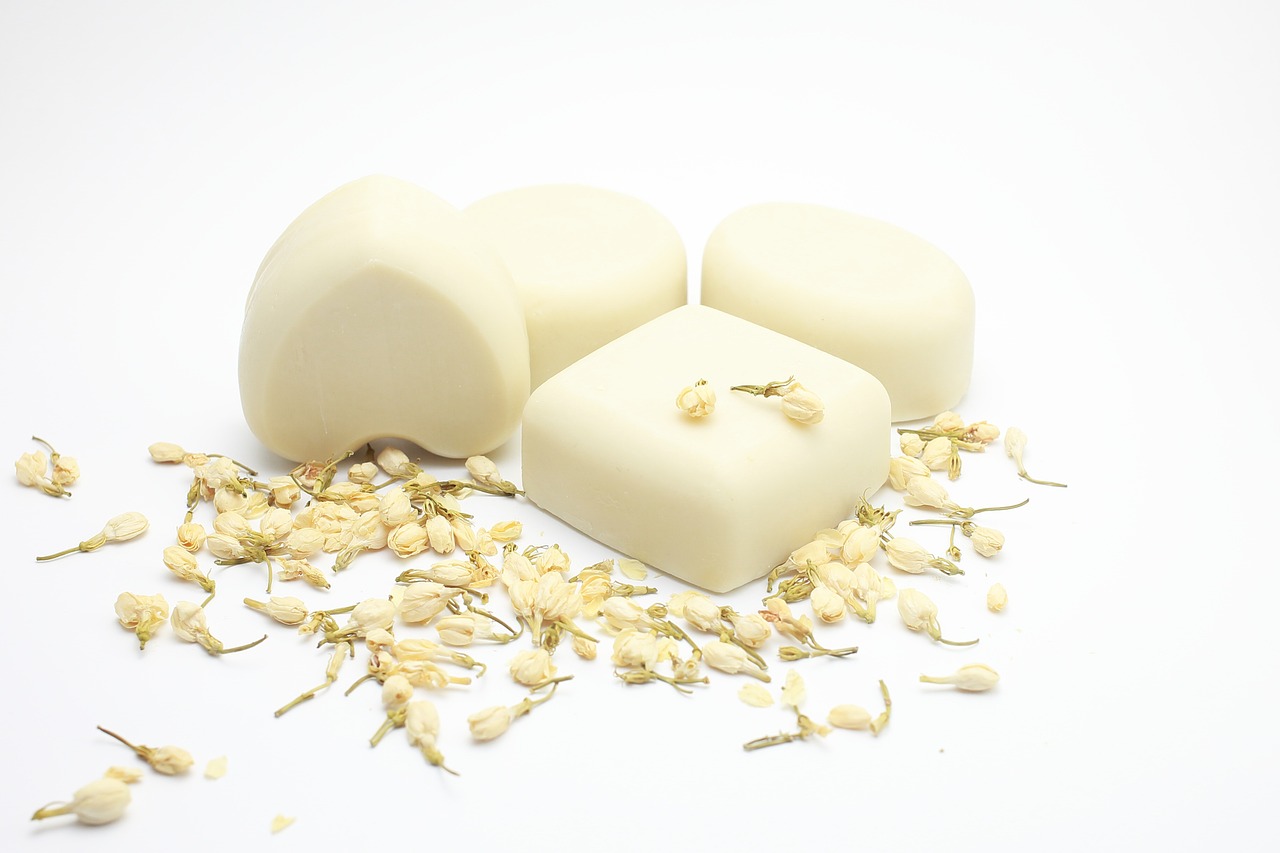
Storage Tips
When it comes to preserving the beauty and integrity of your handmade rugs, proper storage is key. Think of your rug as a cherished book; if you leave it lying around carelessly, it can get damaged, lose its charm, and even fade away over time. To prevent this, you need to adopt some smart storage practices. Here are a few essential tips to keep your rugs in pristine condition:
First and foremost, always clean your rug before storing it. This means vacuuming it thoroughly to remove any dirt or debris that could cause wear over time. If your rug is made of natural fibers, consider giving it a gentle wash according to the manufacturer's instructions. Once it's clean, allow it to dry completely, as moisture can lead to mold or mildew.
Next, when it comes to the actual storage, the way you fold or roll your rug matters significantly. For larger rugs, rolling is preferred. This method not only saves space but also helps maintain the rug's shape. When rolling, make sure to roll it with the pile side facing inwards to protect the fibers. If the rug is smaller, you can fold it, but be careful to avoid sharp creases that could become permanent.
Consider using a breathable storage bag or wrapping your rug in a cotton sheet. This protects it from dust while allowing air circulation. Avoid plastic bags, as they can trap moisture and lead to unpleasant odors or damage. Additionally, store your rugs in a cool, dry place away from direct sunlight, which can cause colors to fade.
For rugs that you plan to store for an extended period, it’s wise to check on them every few months. This way, you can ensure that they remain in excellent condition. If you notice any signs of pests, such as moths, take immediate action to treat the issue. Remember, prevention is always better than cure!
In summary, proper storage can extend the life of your handmade rugs significantly. By cleaning them, rolling or folding them correctly, using breathable materials, and keeping them in a suitable environment, you’ll ensure that your rugs remain as stunning as the day you made them. Think of it as giving your rugs a cozy home when they’re not on display!
Here are some common questions regarding the storage and maintenance of handmade rugs:
- How often should I clean my handmade rug? It depends on usage, but generally, a thorough cleaning every 6-12 months is recommended.
- Can I store my rug in a basement or attic? It’s best to avoid these areas as they can be damp and prone to temperature fluctuations.
- What should I do if my rug gets damaged? Assess the damage and consider consulting a professional for repairs, especially for intricate designs.
Frequently Asked Questions
- What materials are best for making handmade rugs?
When it comes to crafting your own handmade rugs, the choice of materials is crucial. Natural fibers like wool, cotton, and jute are popular for their durability and aesthetic appeal. Synthetic options, such as nylon or polyester, can also be considered for their stain resistance and easy maintenance. Each material has its pros and cons, so think about the look and feel you want for your space!
- What are the basic techniques for making rugs?
There are several techniques you can explore when making rugs, including weaving, tufting, and braiding. Weaving can be done with a loom or by hand, allowing for intricate designs. Tufting is great for creating plush textures, while braiding offers a rustic charm. Each method has its unique charm, so pick one that resonates with your creative vision!
- How do I maintain my handmade rug?
To keep your handmade rug looking fresh and beautiful, regular maintenance is key. Vacuuming regularly helps prevent dirt buildup, and spot cleaning with mild detergent can tackle stains. For deeper cleaning, consider professional cleaning services based on the material of your rug. Proper care will ensure your rug remains a cozy centerpiece in your home for years to come!
- Can I store my handmade rug during off-seasons?
Absolutely! Storing your handmade rug properly is essential to prevent damage. Roll your rug instead of folding it to avoid creases, and store it in a cool, dry place. Using a breathable storage bag can also protect it from dust and pests. With the right storage techniques, your rug will be ready to shine when you bring it back out!
- What design ideas can I use for my handmade rug?
Designing your rug can be a fun and personal experience! Think about drawing inspiration from nature, art, or even your personal experiences. Consider color schemes that complement your decor, and don’t shy away from mixing patterns and textures. The goal is to create a rug that not only enhances your space but also reflects your unique style!



















